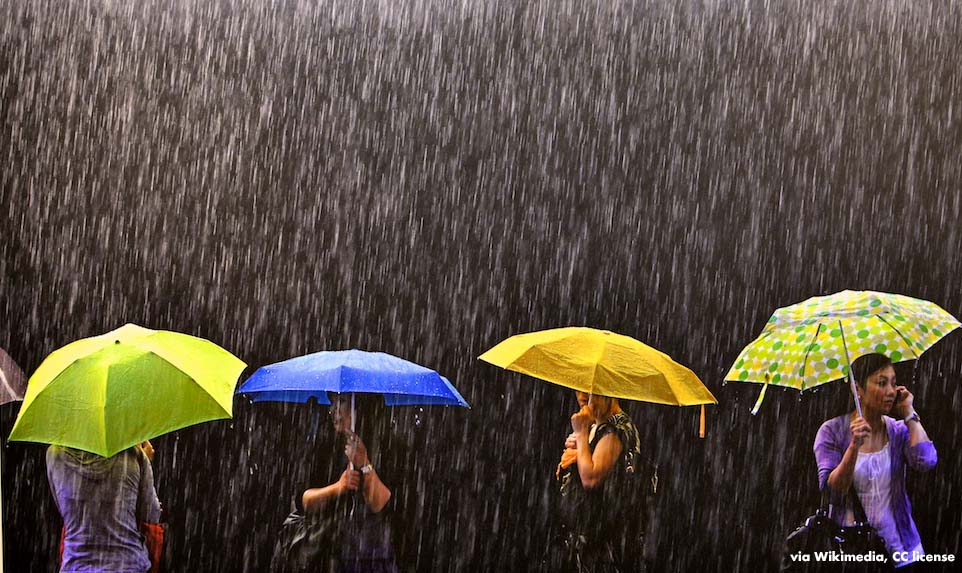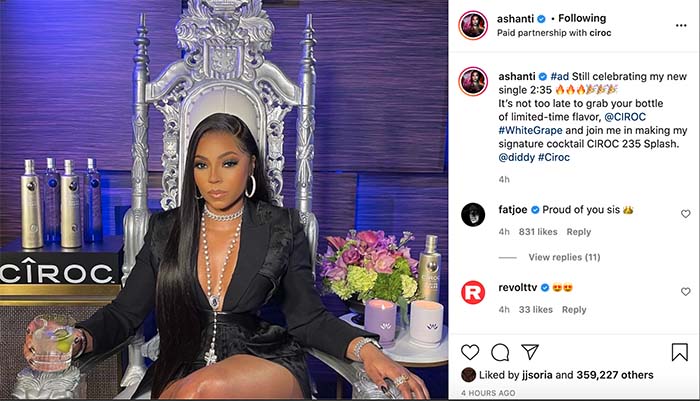In the Doghouse
Dry January Makes Big Alcohol Pray for Rain
 Big Alcohol’s birds have come home to roost, and yet the industry is still determined to fry them up and sell them as sandwiches. Dry January, the social media-propagated health pledge* to steer clear of alcohol for the first month of the year, continues to grow, with 19% of American consumers participating in some way. While only half of those responding say their interest is to cut alcohol out entirely, this still threatens to be a substantial short-term hit to the industry bottom line.
Big Alcohol’s birds have come home to roost, and yet the industry is still determined to fry them up and sell them as sandwiches. Dry January, the social media-propagated health pledge* to steer clear of alcohol for the first month of the year, continues to grow, with 19% of American consumers participating in some way. While only half of those responding say their interest is to cut alcohol out entirely, this still threatens to be a substantial short-term hit to the industry bottom line.
So what can an industry do when the harms of its products are so self-evident that nearly a fifth of adults want to walk away from them entirely? Should it a) mock the entire effort; b) co-opt the entire effort; or c) flag-wave to make non-drinkers seem like enemies of America? Well, why not all three?
A. Mock
Pabst Blue Ribbon wasted no time in launching a campaign deriding Dry January. On January 3rd, they began a campaign by tweeting, “Not drinking this January? Try eating ---.” (Alcohol Justice trusts its readership to intuit the omitted three-letter word.)
They also wasted no time in shuttering it when the response was split between PBR fans egging on the overamped belligerence, and normal Twitter users objecting to the tone and/or content. PBR management was quick to blame an “associate” and ostensibly distance themselves from the scandal, but not before the campaign had achieved trending status on the platform and generated plentiful news coverage.
We should emphasize the vagueness of PBR’s apology, which said simply that they were “handling the matter internally.” It is not clear that anyone faced reprimand, or that any third-party contracts terminated. In fact, it seems likely the “scandal” did what it was supposed to: raised public awareness of PBR as a brand.
The crude language and likely two-faced apology aside, the actual cruelty in this campaign comes through its effort to undercut people who are making efforts to change their drinking behavior. As much as we like to think recovery or cutting back is accomplished through sheer force of will, the one factor that ties every effective mode of behavior change together is community support. Having friends and peers recognize and support your efforts vastly improves your chances of success.
PBR recognized this. Behind their “edginess” was fear. They were desperate to make people considering engaging in Dry January feel like they were isolated, pathetic, and powerless. A chorus of macho, adolescent contempt from the echo chamber of social media could achieve just that. By leaning hard into a brief, well-publicized bout of schoolyard cruelty, they helped the company continue to gorge on its customers.
B. Co-Opt
As global alcohol brands saturate markets worldwide, bend legislators to their wills, and inundate every mass communications channel with images celebrating drinking, there comes a breaking point. Dry January is one of these breaking points, a wide-scale, mostly organic admission that most people feel like they are drinking more than they would like to. This puts Big Alcohol in a precarious position: how do you monetize a popular desire to not drink, while doing the utmost to keep customers drinking?
Heineken’s effort takes the form of “Try January.” This sweepstakes seeks to urge Dry January participants to sample Heineken NA, offering them a vacation package to Hawaii in exchange for acknowledging the brand. (No purchase necessary, by the way. We entered.)
This is largely less pernicious than PBR’s campaign. It acknowledges individuals’ agency in engaging in reducing or eliminating alcohol for a month. Yet it does so in an effort to make money from people seeking respite from the problems… the same company has caused. It even co-opts a catchy motto that originated from the public health community. The inherent cynicism in this attitude leaves a bad taste no cheap lager could wash away. But this campaign also contains more subtle undermining strategies.
In a broad sense, it seeks not just to enhance brand loyalty, but to create a confusion between Heineken NA and basic Heineken. The bottles are nearly identical, and the sense of customer good will from the contest will perpetuate after Dry January is over. (In fact, it is a good rule of thumb when dealing with alcohol companies that any contest, philanthropy, or giveaway has been planned with the assumption that it will generate more in profits than it costs in perks.)
But there is also the language of the contest itself. “Try January is here, and there's nothing dry about it,” the page declares. We here at Alcohol Justice could not figure out exactly what the “nothing dry about it” actually referred to. Was it the liquid from the bottle? The beaches in Hawaii? Was it somehow innuendo? The message was garbled, which seemed an improbable stumble for the marketing department of a multibillion dollar, global company.
Even more improbable when you bear in mind that Big Alcohol long ago successfully cracked the code for undermining public health messaging while seeming to promote it. Not only is Dry January co-opted as a marketing message, but the message tries to supplant it. It casts “dry” in a negative light, in stark contrast to the point of the Dry January campaign. Dry January is not an annual deep-dive into our potentials to feel better in our bodies—it’s a dorky, unfun trend. Think only of Try January, the generous, sunny celebration of a cheap, mass-market, usually alcoholic beverage brand.
We will still go to Hawaii if we win, though.
C. Flag-Wave
The New York Post’s clickbait editorial calling Dry January ‘pure evil’ is a bombastic appeal to drink in the name of… the economy. Aside from its contempt for “[t]emporary health nuts … turning beloved bars into wastelands at a moment in history in which there have never been more reasons to drink,” the evidence of financial impacts are tenuous at best. (For example, one Midtown bartender describes being devastated by the absence of formerly regular lunchtime customers. We cannot back this up with research data, but we suspect lunchtime bar patrons do not engage in Dry January.)
The article borders on parody, but the arguments of Big Alcohol’s useful idiots are seemingly parody-proof—a week before the Post, The Onion ran a satirical cartoon that used essentially the same arguments. InsideHook’s food and drink critic posted a simple and effective evisceration of the Post piece, saving us some typing.
But the Post, in its buffoonery, amplifies a legitimate concern facing the United States. For two years, the country has staked the economic security of the working class on alcohol sales. Massive deregulation swept through every state, short term expansions of the spaces where alcohol consumption is encouraged and the methods by which it can be provided, all in the names of the economic security of the service industry. Now many, if not most states, are trying to make these deregulations permanent.
It is no surprise, then, that for many—even those who have enjoyed the expanded bar footprints and to-go cocktails—this has created a lasting fatigue around the product. The whole organic nature of the Dry January movement reflects its participants’ intuitively understanding that constant alcohol consumption wears on the body and mind.
So congratulations to all those participating in Dry January. You have cut through a 500 billion dollar industry’s efforts to sneer at you, misdirect you, and cast you as the villain. Hopefully you feel a little better this month than you would have. Let’s do it again soon.
* Although Dry January started as an organized campaign by the United Kingdom-based nonprofit Alcohol Change, backed with apps and community building, it has grown internationally and a large number of those who don’t drink for the month, especially in the United States, both learn about it and commit to it via their own friend groups.
WATCH a video on the day-by-day benefits of cutting out booze.
READ MORE about California’s efforts to deregulate the alcohol industry.
Big Alcohol Is #COVIDwashing the Vaccine
The public health community often sections off its prevention efforts on two types of harm: communicable and non-communicable disease. Communicable diseases are contagious, e.g. bacteria and viruses. Noncommunicable diseases are the consequences of lifestyle harms, e.g. drug overdose and heart disease. CoVID-19 threatens to be the defining communicable disease crisis for half the world's population. Alcohol harm forms a long-standing, ever-increasing threat to every generation.Leave it to Big Alcohol, then, to shove the latter on those trying to deal with the former.
As the COVID-19 vaccine gets widely distributed in the United States, global alcohol corporations are taking note and taking advantage. Annheuser-Busch InBev, fresh off a remarkably sleazy lie over donating all of its Super Bowl ad space to vaccine awareness, is now offering free beers to anyone providing proof of vaccination. That proof must be provided online along with full name, email address, and date of birth. This is not so Budweiser can verify vaccine status (legally, Budweiser can't do that regardless), it's so they can collect marketing information.
Faux craft brewer Sam Adams is doing the same in exchange for an Instagram bump. The state of New Jersey is doing the same, and while most people not from Philadelphia agree there is less harm derived from promoting New Jersey than from promoting alcohol, state sponsorship of drinking threatens to create more lasting concerns. All of these associations between drinking and COVID-19 vaccines create a three-fold problem.
First, they are #COVIDwashing. For the past year and change, the United States has been awash in alcohol companies trying to increase their profits amidst increases in binge drinking and psychological distress. State governments have been complicit in this, culminating in legislative disasters like California's current attempts to massively deregulate alcohol sales. And the worst companies (Annheuser-Busch, you're up again) have attempted to directly tie alcohol to public health.
Second, alcohol use has likely worsened the scope of the pandemic. Alcohol suppresses the immune system, making heavier drinkers more likely to contract the virus and develop higher viral load. Densely packed bars and clubs have created the ideal spaces for person-to-person transmission, especially when intoxication makes it easier to neglect social distancing, masking, and other protective behaviors. On top of that, alcohol causes inflammation, and lung inflammation--specifically, suffocation as inflamed lungs fill with pus and fluid--is the primary driver of death from the disease.
But the worst aspect of this is the threat that alcohol may impair the development of immunity. Heavy drinking very clearly inhibits immune response, and having a strong initial immune response is fundamental lasting immunity. It is not clear that one free beer makes a difference, but following it up with two incontrovertibly puts a damper on immune function.
The pandemic still blazes worldwide, including in the United States. The vaccine shows promise to slow the tide of harm. The country still needs real leadership, however, to not help Big Alcohol--the merchants of a harm that every generation experiences, and which will never have a vaccine.
Pop Scrapes Bottom: Ashanti's Instagram Markets Liquor to Youth
 Social media is the domain of the young. Adults like to think they understand the digital world, that they use sites like Instagram and TikTok in a savvy and smart manner, but fact of the matter is, most of these sites are vastly more popular among teens. So when pop star Ashanti promotes Ciroc--a flavored hard liquor--she may claim she's talking to adults even while her words fall on underage ears.
Social media is the domain of the young. Adults like to think they understand the digital world, that they use sites like Instagram and TikTok in a savvy and smart manner, but fact of the matter is, most of these sites are vastly more popular among teens. So when pop star Ashanti promotes Ciroc--a flavored hard liquor--she may claim she's talking to adults even while her words fall on underage ears.The above post, from earlier this year, was posted to her Instagram account. According to Sprout Social, two-thirds of 18-29 year-olds use the service, as do nearly 3 out 4 13-17 year-olds. That is to say, the majority of non-legal drinkers are liable to be inundated with alcohol ads in this manner. Research shows that pop music is a major vehicle by which underage fans get exposed to pro-alcohol messaging. And these messages stick: a major review of the literature by the Alcohol Research Group shows that exposure to these messages directly causes underage drinking.
Time and time again, Instagram has facilitated these celebrity endorsement deals, as have SnapChat and, increasingly, TikTok. Social media is, for all intents and purposes, a town square, and one whose use by Big Alcohol is limited only by a set of voluntary restrictions. (Incidentally, much of the time, the actual town square is also subject only to these voluntary restrictions.) The mechanism through which compliance with these restrictions can be monitored or enforced is based almost entirely on public pressure, but the entire nature of phones are to be private. So when Big Alcohol chases a pop icon to sing its praises online, that all but guarantees wide-open young ears and eyes, with consequences to youth and none to either the retailer or endorser. Indeed, it takes an overt act as stupid as pouring hard liquor into your cereal to draw public outcry.
Ashanti, her cheering friend Fat Joe, DJ Khaled, or any other celebrity should not be expected to report the age demographics of their listenership. While we would hope they would be smart and civic-minded enough to be cautious in their endorsement deals, ultimately it is the brands themselves that need to be held accountable. Alcohol Justice calls for Ciroc and all other liquor producers to end youth-targeted celebrity campaigns. Time for them to grow up and let the kids have their world for themselves.
More Articles ...
Help us hold Big Alcohol accountable for the harm its products cause.
| GET ACTION ALERTS AND eNEWS |
STAY CONNECTED    |
CONTACT US 24 Belvedere St. San Rafael, CA 94901 415-456-5692 |
SUPPORT US Terms of Service & Privacy Policy |


